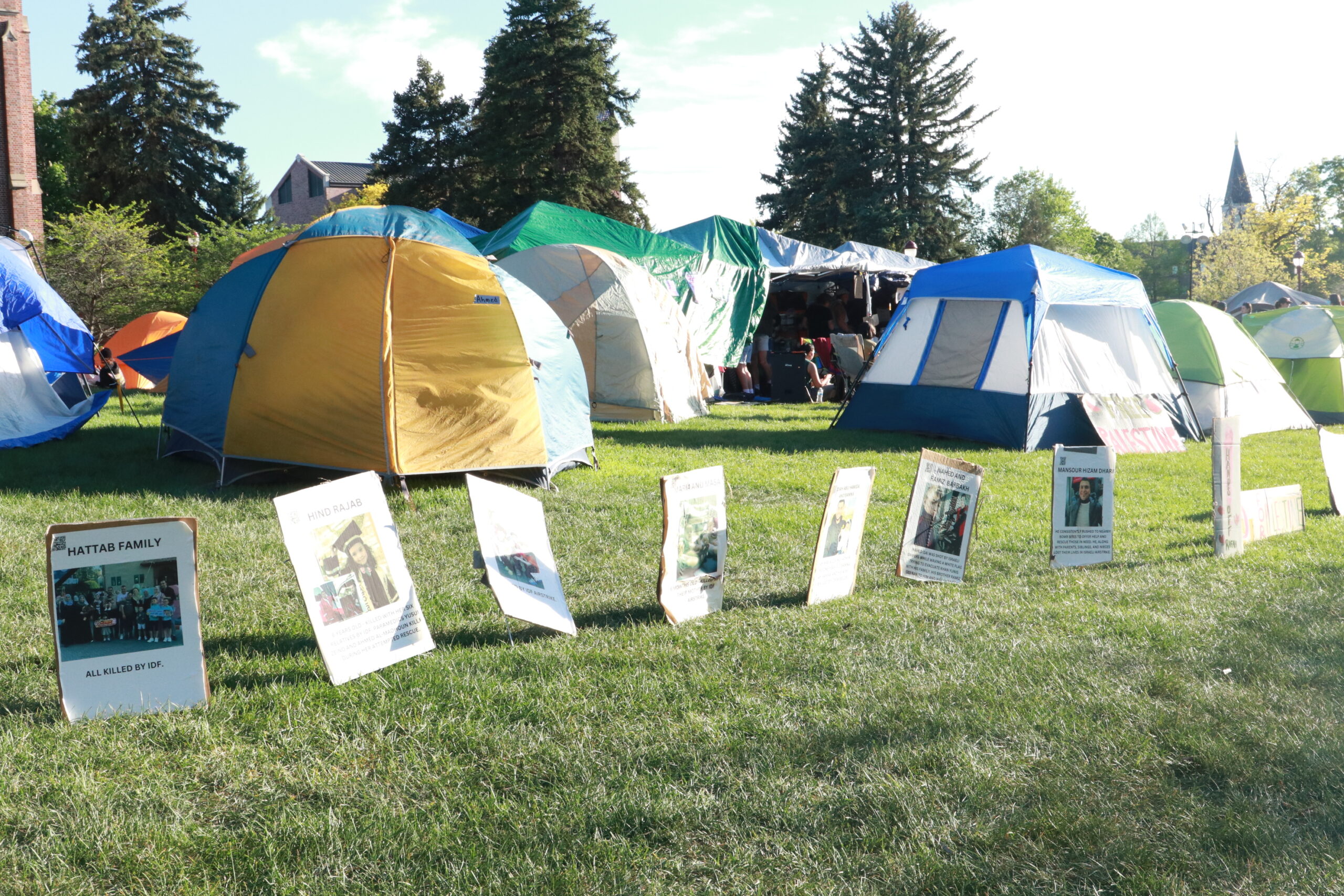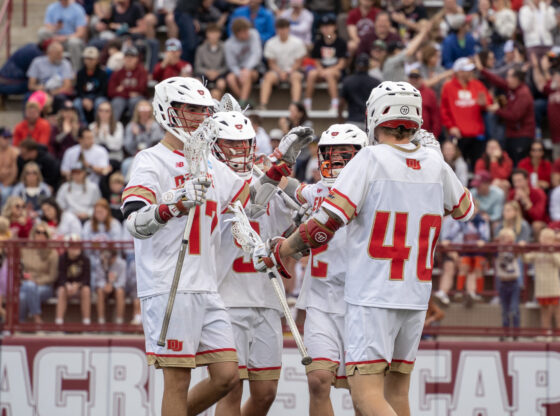Division I hockey is not the only hockey team at DU.
There are three equally competitive club hockey teams as well, and two of them draw more interest than any other club sport on campus.
DU’s club hockey belongs to the American Collegiate Hockey Association (ACHA), which was founded in 1992.
It grew rapidly and in 2000 a women’s division was added.
Today the league has four divisions with 300 teams nationwide.
The men’s league is made up of divisions I, II, and III and the women’s league has its own division.
The ACHA offers organized play and competitive hockey.
It is especially popular at Southeast colleges where there is no NCAA hockey.
DU’s men’s hockey club is a member of ACHA’s Division II and is one of 26 teams in the West region.
Other Colorado teams in the region include Colorado State, the University of Colorado and Metropolitan State College of Denver. The national tournament is held each March, with the top four teams from each region competing.
DU placed 7th in its region this year and just missed the tournament.
Matt Brown, president of the club, said about 60 men tried out this year, and there were three days of cuts to trim the roster to 26. There were so many players that the club is considering starting another team, possibly in Division III.
“The club is really popular right now, especially since we have such a good Division I team,” said Brown.
He added, “A lot of the guys in the club are from places like Boston, Minnesota and Illinois, where high school hockey is pretty big.”
There are 14 games in the regular season, and DU finished 8-6 this year.
The schedule is split half home and half away, and the team takes trips as far as Wyoming and Utah. There are other schools in the region the club would like to play, but can not afford the transportation costs.
“We’d like to fly to a place like California, but we don’t have a budget for a trip like that,” Brown said.
The club hopes to eventually raise enough money to play on the West Coast. The team prefers to play in Magness Arena and gets a set schedule at the beginning of each season.
Sometimes, though, both practices and games are either rescheduled or cancelled at the last minute. Several practices were cancelled this year no more than an hour before the game. The reason is the need to get the basketball court set up after a hockey game.
“Whoever is in charge of changing the ice to a ball court decides to do it early, so they don’t have to do it late at night,” Brown said.
“They just cancel our ice time and don’t bother to tell us about it until we get there,” he added.
One game was moved back three hours and another was cancelled. The club now checks with the rink each week to make sure there will be no conflicts.
But Brown says the road trips make it all worthwhile.
“I love going to tournaments with the guys and staying in hotels. The ride back is the best part,” he said.
The women’s club hockey team at DU consists of 15 women and three coaches. Students, faculty and alumni make up the roster.
In play, full contact is not allowed.
“We got uniforms and everything, it’s really great,” said Coach Rob Perry, quoting a line from the movie “Major League.”.
The club plays games on Friday and Saturday nights and travels to two tournaments a year in Colorado.
The team practices in Joy Burns Arena and Magness Arena and like the men’s team, has had problems with scheduling games and practices. Instead of going through club sports, the women’s team schedules its events directly through the rinks.
Practices and games getting cancelled at the last minute infuriate President Alie Kordof and Vice President Katie Lowry.
“Sometimes they will change our game times, and we have to contact the other team and the referees to let them know not to come,” said Lowry.
Several times the team forfeited games. Kordof and Lowry met in a women’s league in high school.
Lowry started playing in eighth grade, and played three years on a boy’s team before joining a women’s league.
“High schools and colleges don’t have women’s hockey teams, so we have to play in other leagues,” she said.
Lowry and Kordof would like to have only students as players.
“It’s hard to find enough women to play, so we have to go off campus a little bit and do some recruiting,” said Kordof.
The highlight of the season for the women was beating their arch rival, the Arapahoe Chill, to get to the division championship.
The third and final piece of the club hockey circle at DU does not play on ice, but on a hard floor.
Inline hockey is in its fourth year at the school and is almost as popular as men’s club hockey. The club has an A team with nine players and a B team with 12 players.
Darwyn Metzger started the club his freshman year at DU and has watched it develop for three years.
“The first year I just tested the waters and rounded up as many guys as I could to play, and by the third year we were in the National Collegiate Roller Hockey Association,” he said.
He added, “Some of the guys on the team had always played ice hockey, but decided to play in our club instead.”
The main differences between inline hockey and ice hockey are the playing surface and the number of men on the floor.
Ice hockey is played five on five, while inline is four on four. Inline hockey also has no icing rule and no two-line passes, which means that a player can make as long a pass as he wants.
“It’s basically like a fast break in basketball, whereas in ice hockey you’re not allowed,” he said.
The advantage to playing four on four, he said, is that there is a lot more space.
The club goes to the North American Roller Hockey Championships each winter. The league’s national tournament will be held in Fort Collins in April. Unlike the ice hockey clubs, inline hockey does not have problems finding places to play.
They normally practice at Bladium Sports Club near the old Stapleton Airport, at a fourth of the cost that the public pays.
“We know them down there and only pay fifty bucks, while most people have to pay $250,” said Metzger.
If they cannot play there, the club can go to one of the other four area roller rinks. The team is on good standing with club sports and has never missed a meeting. They received $2,500 from the officers this year, which Metzger said is the most of any club.
“We always show up to meetings and pay our dues, so they take care of us,” he said.
The inline club holds tryouts each year. Metzger said several of the players have played nationally, and that no roster spot is safe.
“We don’t practice as much as some other schools do, but we are just as competitive,” he said.
There is a friendly rival between the inline and ice clubs. Each tries to convince the players to switch clubs.
“I always decline though, since ice hockey was never my thing,” said Metzger.
Trips to Las Vegas and California, fun with friends playing a game they love and keeping a competitive edge are all benefits of club hockey.
And DU is in no danger of a lockout any time soon.











